Diets low in whole grains are recognised as the leading dietary risk factor for ill-health, disability, and early death in Europe.
Eating more whole grains lowers our risk of developing non-communicable diseases, such as colorectal cancer, cardiovascular disease, and type 2 diabetes. Despite these well-documented health benefits, EU overall whole grain intake remains very low.

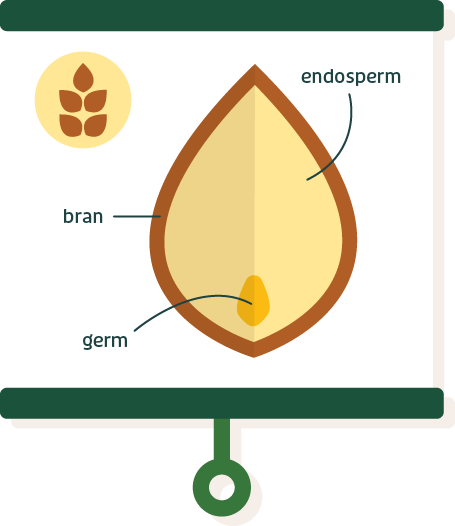
Whole grains refer to cereal grains that contain all three parts of the entire cereal grain (kernel): the bran, the germ, and the endosperm.
Examples of whole grains include whole wheat, brown rice, bulgur, millet, oatmeal, quinoa, whole rye, and many more!


They’re a good source of vitamins & minerals
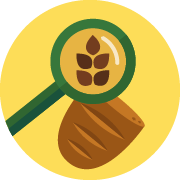

They’re high in dietary fibre


They help reduce our disease risk


They’re environmentally friendly


They add taste and texture to meals
Switch To Whole Grains inspires and supports people to try switching white, refined grains for whole grain alternatives for one month and beyond.
Ready to make the switch? Sign up for the 4-week challenge today by clicking the button below and unlock access to these amazing resources:
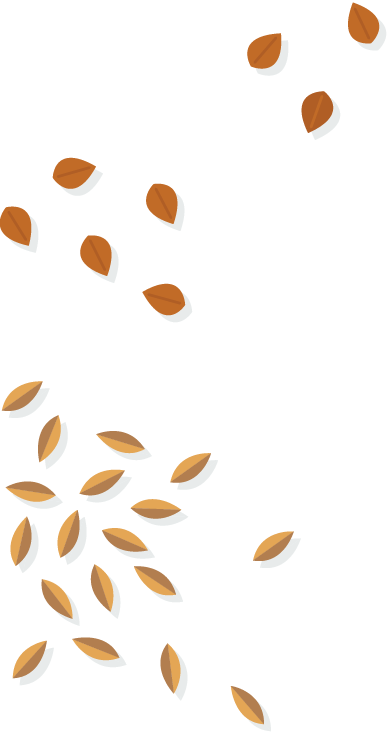
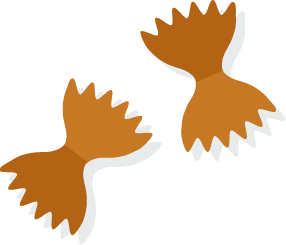
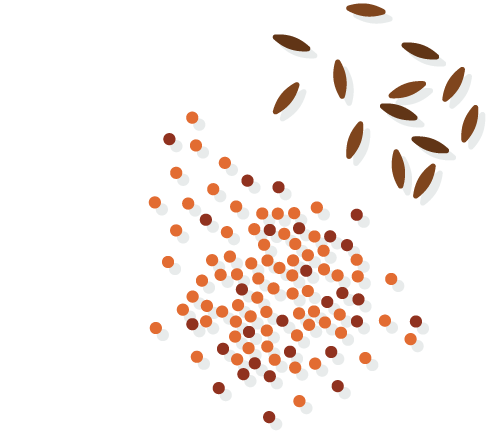

4 challenges to take part in, 1 per week

Delicious recipes

Tips & tricks to eat more whole grains


Which whole grains are you switching to? Show us on social media using the hashtag #SwitchToWholeGrains and tagging @eufic. Over on @eufic, we will be championing healthy eating and sharing knowledge on the advantages of whole grains!
Maak de switch naar volkoren! 🌾
Gezonde gewoontes zijn makkelijker (en lekkerder!) dan je denkt. Doe mee met de Switch to Whole Grains Challenge en ontdek het zelf! Daag jezelf uit tijdens deze feestperiode!
✔ 4 weken lang inspiratie
✔ Heerlijke recepten
✔ Tips & tricks om meer volkoren te eten
Sluit je aan bij 650+ deelnemers en ontdek de voordelen van volkoren voor jouw gezondheid.
👉 Doe mee: https://switchtowholegrains.com/pledge/
📸 Deel jouw succes met #SwitchToWholeGrains en inspireer anderen!
Bron #broodnet #broodgoedverhaal

🥖España es uno de los países europeos con menor consumo de cereales integrales 🍞
Los cereales integrales aportan hasta un 75 % más de nutrientes y significativamente más fibra que los cereales refinados
Descubre más:
🔗https://sl1nk.com/hl0c6
#Consumidora #Eypasa #cerealesintegrales #fibra #alimentacionsaludable
#switchtowholegrains #pasatealointegral

Myth or truth? Should you avoid all packaged whole grain foods because they are ultra-processed? 🍞❓
Whole grains, whether from a bag of brown rice, a loaf of bread, or a box of cereal, are associated with a range of health benefits. Research shows that every 15 grams of whole grains eaten per day is linked to:
✅ 6% lower risk of total mortality
✅ 7% lower risk of coronary heart disease
✅ 12% lower risk of type 2 diabetes
✅ 3% lower risk of colorectal cancer
Some people avoid packaged whole grain foods because they are labelled “ultra-processed.” While it’s true that some products may contain small amounts of additives, reconstituted ingredients, or added nutrients, there’s usually a reason behind it.
Additives like emulsifiers or dough conditioners help improve texture, consistency, and shelf life. Reconstituted ingredients (e.g., refined vegetable oils, protein isolates, maltodextrin) can help create a consistent product, and added nutrients like folate are often included to replace nutrients lost during processing or help you meet dietary recommendations. Avoiding all packaged whole grains could unnecessarily limit your diet. Many packaged whole grain breads and cereals are high in fibre and associated with lower disease risks.
Why does this myth feel true? Packaged ultra-processed foods like sugary drinks, sweets, or baked goods like pastries are often less healthy, so it’s easy to assume that all packaged foods are bad. But the nutritional value matters more than packaging or processing. European dietary guidelines recommend eating more whole grains, including packaged options, to help meet fibre and nutrient needs.
💡 3 tips to choose nutritious whole grain products:
1️⃣ Look for whole grains as the first ingredient on the list
2️⃣ Limit products high in added sugar, salt, and fat
3️⃣ Choose foods that meet the 10:1 ratio of total carbohydrates to fibre
💬 Want more myth-busting tips? Comment “MISCONCEPTIONS” and we’ll send you our top 10 common concerns about whole grains, debunked with science!
#SwitchToWholeGrains #WholeGrains #HealthyDiet

Ready to level up your health? 🌾
Join me on the #SwitchToWholeGrains challenge and discover just how delicious, nutritious, and eco-friendly whole grains can be!
🍚 Swap out the white stuff for hearty whole grains, your body (and the planet) will thank you.
Follow eufic for recipes, tips, and more to keep you motivated and inspired all month long!
👩🍳🎉 Are you in?
Let’s make whole grains the new norm! 🙌
#HealthyChoices #WholeGrains #EatForThePlanet

Saatenbrötchen
Diese leckeren Brötchen gab es gestern bei uns zum Frühstück.
Ich hatte bei den Vorbereitungen für meinem Backkurs vor drei Wochen versehentlich das Mehl falsch abgewogen (vergessen den Vorteig abzuziehen) und hatte diese Mehlmischung noch übrig.
Ich habe jetzt einfach ein Auffrischrezept draus gemacht und gleich noch die gesammelten Sauerteigreste der letzten vier Wochen darin verarbeitet.
Herausgekommen sind super saftige, und aromatische Brötchen mit langer Frischhaltung.
#brötchen #frischebrötchen #frühstücksbrötchen #saatenbrötchen #körnerbrötchen #realbread #gutesbrot #brot #brotbacken #instabaker #instabread #breadbaking #dinkel #lievitomadre #backenmitliebe #backenmithefe #wenighefe #esstmehrvollkorn #switchtowholegrains #langegare #kürbiskernoel

International Whole Grain Day is coming up on Nov. 19, and we’re doing more of what we love: promoting the goodness of whole grains!
These #switchtowholegrains graphics from eufic are a great starting point as to why whole grains belong in your kitchen, and we’ll also dive into our own day-of celebrations with a webinar on Nov. 19 at 2 p.m., all about growing and celebrating local whole grains!
Get the inside scoop at the link in our bio 🤭
#internationalwholegrainday #iwgd #wholegrains #webinar #freewebinar

Saatenbrötchen
der Anschnitt.
Das waren super saftige, aromatische Brötchen mit einer sehr langen Frischhaltung. Ich hatte heute (nach drei Tagen) noch eins zum Frühstück. Das war immer noch lecker.
Das Rezept musste ohne Sauerteig auskommen, daher kam ein Poolish zum Einsatz, sowie eine lange, kalte Gare über Nacht. Für zusätzliches Aroma sorgt ein Brühstück mit gerösteten Saaten.
Die grünliche Krumenfarbe kommt vom Kürbiskernöl.
50% Vollkornanteil
25% Saaten
und eine ziemlich hohe Hydration…
#brötchen #frischebrötchen #frühstücksbrötchen #saatenbrötchen #körnerbrötchen #realbread #gutesbrot #brot #brotbacken #instabaker #instabread #breadbaking #dinkel #lievitomadre #backenmitliebe #backenmithefe #wenighefe #esstmehrvollkorn #switchtowholegrains #langegare #kürbiskernoel

We recently got featured by Switch to Whole Grains!
They asked us about our approach to baking with whole grains — and why we believe more home bakers should give it a try.
When we say “whole wheat,” we mean flour that still contains all its parts — the bran, germ, and endosperm. Those outer layers are rich in fiber, minerals, vitamins, and natural fats that are often stripped away in refined flour.
But here’s the fascinating part: sourdough fermentation helps unlock those nutrients. The slow fermentation process breaks down phytic acid, making minerals like zinc, magnesium, and iron more available to our bodies. The result? Bread that’s not only more flavorful and aromatic, but also easier to digest and more nourishing.
At Baking Lab, we bake with whole grains not only to feed bodies, but to reconnect people with craft, culture, and respect for food. In our workshops, we explore how every step—from flour to fermentation—carries meaning.
Curious to learn more? Read the full feature on Switch to Whole Grains from eufic or experience the process yourself by joining one of our sourdough workshops.
#SwitchToWholeGrains #breadworkshop #sourdoughbread #amsterdambakery #dyi #brood #bread #wholegrains

Saatenbrötchen
Diese Brötchen habe ich am Wochenende nochmal für meinen nächsten Backkurs (einen Anfängerkurs) probegebacken.
Im letzten Kurs hatte ich mir einige Notizen gemacht, was nicht so optimal war und was ich an den Rezepten noch verbessern möchte.
Der Teig für diese Brötchen war beim letzten Mal sehr weich. Obwohl die Brötchen nur abgestochen werden (und ich dachte, das wäre ein sehr einfaches Rezept) haben sich die Teilnehmer damit etwas schwer getan 🫣🙈…
Ich habe daher die Wassermenge nochmal reduziert.
Am Sonntag war mein Mann das ‚Versuchskaninchen‘ und musste die Brötchen abstechen, in Saaten wälzen und auf das Backpapier bugsieren.
Er hat es zwar ganz gut hinbekommen, aber einfach war es für ihn auch noch nicht.
Der Teig war immer noch recht weich.
Dafür sind die Brötchen dann aber auch schön saftig…
Man kann sie auch nach zwei Tagen noch problemlos essen.
Jetzt bin ich gerade am Überlegen, ob ich den Teig noch ein wenig fester machen soll…
Was meint Ihr?
Kann man den Backanfängern so etwas zumuten?
#brötchen #frischebrötchen #frühstücksbrötchen #saatenbrötchen #körnerbrötchen #realbread #gutesbrot #brot #brotbacken #instabaker #instabread #breadbaking #dinkel #lievitomadre #backenmitliebe #backenmithefe #wenighefe #esstmehrvollkorn #switchtowholegrains #langegare #kürbiskernoel

EUFIC is encouraging everyone to make simple, delicious changes through its #SwitchToWholeGrains campaign. Hospitality has a unique opportunity to lead the way, showing diners that choosing whole grains and ancient grains can be both flavourful, nutritional and climate-friendly.
Whole grains are grains kept in their complete form, like brown rice, quinoa, barley and oats. Compared to refined versions, they’re more nutrient-dense, minimally processed and far less resource-intensive. They deliver better flavour, texture and slow-release energy while ranking low on greenhouse gas emissions, using less water to grow and supporting healthier soils when farmed regeneratively or organically.
Ancient grains are heritage varieties grown for centuries with little modification — millet, amaranth, teff, einkorn, spelt, khorasan. Often eaten as whole grains, their strength lies in diversity and resilience. They thrive in tough conditions, need fewer chemical inputs and adapt well to climate and disease pressures. Bringing them back into kitchens adds flavour and cultural richness while reducing over-reliance on the four crops (wheat, rice, maize and soy) that currently provide 60% of global calories — a system that weakens biodiversity and increases vulnerability.
Find out how you can get involved on switchtowholegrains.com. Looking to make the switch? Try these ideas for replacing refined grains with whole grains on your menus.

This one food group could help lower your risk of disease and help you live a longer, healthier life, but most of us aren’t eating enough of it! 🌾🤔
We’re talking about 𝘄𝗵𝗼𝗹𝗲 𝗴𝗿𝗮𝗶𝗻𝘀! And we’re making it easier (and more delicious) to add them to your plate with our 4-week challenge!
👉 Join our #SwitchToWholeGrains challenge - a 4-week journey to help you eat more whole grains with simple swaps, tasty recipes, and practical tips to make healthy eating part of daily life. And the best part? It’s free and you can join anytime!
𝗪𝗵𝘆 𝘄𝗵𝗼𝗹𝗲 𝗴𝗿𝗮𝗶𝗻𝘀?
Whole grains are packed with fibre, vitamins, and minerals and eating just 50 g a day is linked to a:
✅ 25% lower risk of type 2 diabetes
✅ 20% reduced cardiovascular mortality
✅ 12% lower cancer mortality
✅ 15% decrease in overall mortality
Did you know that the largest and most comprehensive analysis of global health risks, the Global Burden of Disease study, actually identified a low intake of whole grains as the #1 dietary risk factor for disease, disability, and early death in Europe? 🤯
𝗪𝗵𝘆 𝘀𝗵𝗼𝘂𝗹𝗱 𝘆𝗼𝘂 𝗷𝗼𝗶𝗻?
Most of us fall shart of the recommended 25 g of fibre per day. Whole grains are one of the easiest and most effective ways to close that gap.
But we know the barriers:
❓ Confusion over what counts as a whole grain
🍚 Uncertainty about how to cook them
🛒 Difficulty finding them in the supermarket
That’s where we come in! 💪
𝗛𝗼𝘄 𝘁𝗼 𝗷𝗼𝗶𝗻?
💬 Comment “JOIN” and we’ll send you everything you need. When you join the challenge, you’ll get 4 weekly challenges to participate in, chef-created recipes from @climatesmartchefs & practical tips to eat more whole grains with confidence.
📸 We’d love to see your whole grain journey! Share your swaps using #SwitchToWholeGrains and tag us. Let’s make whole grains a daily habit 😋

ALLE REZEPTE www.vollkorn.net
Links in dem Highlight BLOG REZEPTE
#roggenbrot #urgetreide #urkorn #waldstaudenroggen #lichtkornroggen #sauerteig #sauerteigbrot #sauerteigbrotselbstgemacht #einfachbacken #purevollkornbrote #vollkorn #vollkornbrot #sourdough #sourdoughbread #bread #darmgesundheit #fodmap #roggenmischbrot
#gutesbrot #backenmitvollkorn #röstbrot #cleaneating #nowhiteflour #backenmitfreunden #vollkornvolllecker #kartoffelbrot #bauernbrot #roggenvollkornbrot #eigenesrezept#SwitchToWholeGrains

Learn to identify whole grain products, cook delicious meals, find practical tips for a smooth, gradual switch, and much more!